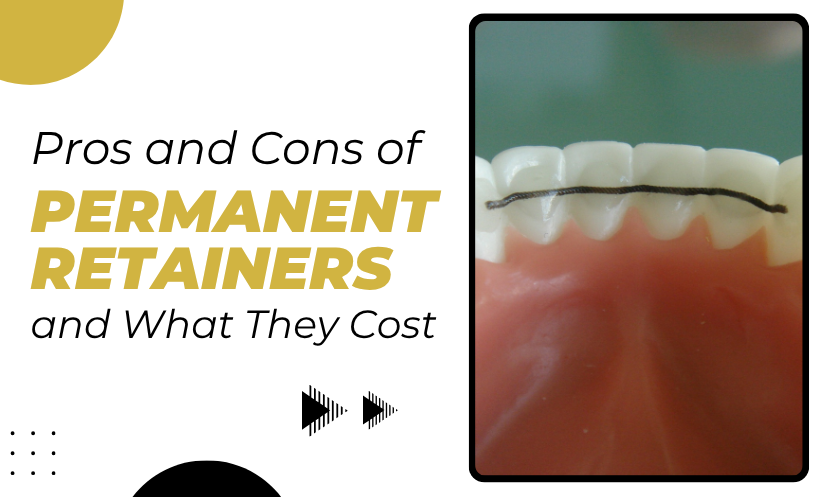So, you’ve finished your orthodontic treatment—braces are off, teeth looking sharp, selfies back on point. But now your orthodontist is throwing around words like ‘retainers’ and ‘long-term maintenance.’ And here’s where permanent retainers come in. I’ll be honest, when I first heard about them, I thought, ‘Wait, you want to glue something to the back of my teeth… forever?’ Turns out, they’re not as scary as they sound. But like anything else in life, there are ups and downs. If you’re trying to decide whether to go for a permanent mouth retainer, here’s everything I wish I’d known before I got mine fitted.
What Exactly Is a Permanent Retainer?
A permanent retainer, also called a fixed retainer, is a thin wire that’s bonded to the back of your front teeth—usually on the lower jaw, sometimes on the top too. It’s basically invisible from the outside (which is a win), and it’s meant to keep your teeth from drifting back to their old ways after braces. Once it’s in, you don’t take it out. It just chills there, quietly holding things together like an invisible safety net.
The Pros of Having a Permanent Retainer
Alright, let’s start with the good stuff. One of the biggest perks is convenience. You don’t have to remember to put it in or take it out. It’s just there, doing its job 24/7. That’s especially handy if you’re forgetful (guilty) or just not great with routines. Another major plus? It’s invisible. No one knows you’re wearing one unless they’re super close up in your mouth, which would be weird anyway. Also, permanent mouth retainers are particularly good at keeping those lower front teeth aligned, which are notorious for shifting.
The Cons—Because Nothing’s Perfect
Now for the not-so-fun bits. First up, cleaning around a fixed retainer is a bit of a mission. Flossing gets tricky—you’ll need special floss threaders or interdental brushes to get in there properly. I’ll be honest, I skipped it a few times early on and ended up with plaque build-up, which wasn’t cute. Another con? If the wire comes loose, it can irritate your tongue or gums, and you’ll definitely need to book an appointment to get it fixed. And while the retainer itself is low-key, not everyone likes the feel of having a wire stuck behind their teeth all the time.
Cost of a Permanent Retainer
Let’s talk money. The cost of a permanent retainer can vary depending on where you go and whether you’re getting top, bottom, or both. On average, you’re looking at around £150 to £400 per arch. So if you’re getting both top and bottom, that could be up to £800. Some places include it in the total cost of your orthodontic treatment, while others bill it separately. It’s not cheap, but considering it helps protect thousands of pounds’ worth of dental work, it’s not outrageous either.
How Does It Compare to an Invisible Retainer?
Great question. An invisible retainer (also called a clear or removable retainer) is usually a transparent tray that you wear over your teeth—kind of like Invisalign. It’s discreet, and you can take it out to eat, brush, and floss, which is handy. But here’s the catch: you have to remember to wear it. If you forget or get lazy, your teeth can start to shift. I’ve heard stories of people who went weeks without wearing theirs and ended up needing braces again. Not ideal. With a fixed retainer, you get peace of mind—it’s doing the work even when you’re not thinking about it.
Fixed Retainer Orthodontics: Are They for Everyone?
Not necessarily. Some people aren’t great candidates for a fixed retainer—if you’ve got bite issues that could put too much pressure on the wire, for example, or if your enamel isn’t strong enough to bond it properly. Also, some orthodontists prefer to use a mix: a permanent retainer on the bottom teeth (where movement is more likely), and a removable one on top. It really depends on your teeth and how disciplined you are. Your orthodontist will help you figure out what makes sense.
Living with a Permanent Retainer: What to Expect
It takes a few days to get used to. The wire feels weird at first, and you might run your tongue over it constantly (I still do sometimes, years later). But after a while, you honestly forget it’s there. You’ll need to be a bit more mindful with your dental hygiene, especially around the wire, but it becomes second nature. I keep a little interdental brush in my bag just in case. Also, don’t bite into really hard foods like crusty baguettes or boiled sweets—you’ll risk popping the wire off.
What If It Breaks or Comes Loose?
Been there, done that. Mine came loose on a weekend and was poking my tongue every time I talked. Most clinics will fix it quickly, but you’ll want to ring them as soon as it happens. Don’t try to yank it off or glue it yourself (seriously). A loose permanent mouth retainer can still do damage if it’s not sitting right, so get it sorted ASAP.
Final Thoughts—Would I Get One Again?
Honestly? Yeah. Even with the fiddly flossing and the occasional annoyance, my fixed retainer has kept my teeth looking exactly how they did the day my braces came off. It’s one less thing to think about in my daily routine, and it’s paid off big time. If you’re thinking long-term and don’t want to mess around with removable retainers, this could be the way to go. Just be prepared to put in a little extra effort to keep it clean—and maybe carry floss in your bag, just in case.
At 1A Orthodontics, we understand that each smile is unique, and we’re here to help guide you through your orthodontic journey—whether it’s deciding on the right retainer or keeping your smile shining long after treatment. Ready to take the next step? Reach out to us today!



